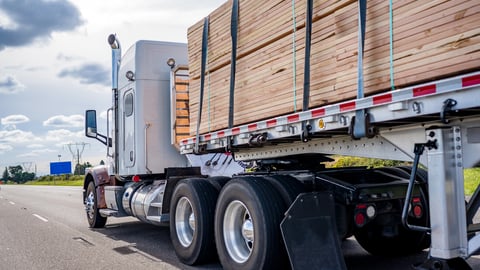Dealers look to solve the driver shortage
“Who has truck drivers coming out of the seams?” That was the question posed by Tony Misura to a roomful of dealer members in March during a seminar at LMC Annual held in Charlotte, North Carolina.
The response to the question was silence with the exception of one dealer who softly said, “No one.”
Misura, the founder of The Misura Group — a building materials recruiting and consulting firm — was driving home the point that solid experience is becoming more and more difficult to find. And with a fair share of skilled personnel set to exit the labor pool over the next several years, finding drivers will be even more difficult.
The trucking industry is currently facing a shortage of 80,000 drivers and 41,000 technicians. But over the next decade, trucks will be expected to move 2.4 billion more tons of freight than they already do today, according to American Trucking Associations (ATA).
Additionally, the median age of U.S. truck drivers now sits between 51 and 52 years old, meaning many are toward the end of their careers.
“The shortage of skilled, trained drivers is palpable and real,” says John Quast, president of Parks Building Supply. “The driver community is aware of the flowing values of dollars that are out there, especially the increases that can be earned for OTR (over the road) drivers versus drivers who would drive locally.”
Quast notes that drivers sometimes chose the OTR route because the pay is better. But the travel leads to a lack of family life or “normal life.”
“Then they find that OTR driving is tough, and they choose to come back for the normal life making local deliveries,” Quast says. “The problem for these drivers is there a wage gap between these two driving situations.” With about 188 drivers across the company, 84 Lumber is heavily reliant on the work and presence of its carriers.
“Drivers are extremely important to the success of our business,” says Mitch Feldman, vice president of specialty purchasing and fleet/logistics at 84 Lumber. “As the final representation of 84 at the jobsite after the sale, a good driver always enhances customer satisfaction and service.”
Feldman notes that DOT compliance has improved the quality of drivers on the road. But they’ve also demanded and received escalations in pay.
Some companies are willing to spend more for good drivers. Walmart employs more than 12,000 Class A drivers who can earn in excess of $110,000 per year.
On its “Drivers & Transportation” career recruiting page, Walmart says, “We’ve increased the mileage and activity pay for all of our Class A driving jobs across the nation, because top talent deserves top pay, for more than just your miles.”
But despite competitive wages and benefits being offered, there still aren’t enough drivers to go around.
“It’s never been more difficult to hire CDL truck drivers for our company,” John Perna, president of Hamilton Building Supply, told HBSDealer. “Over the past few years, the CDL driver wage band has been widening and increasing, so advertising for job placement has been like trying to hit a moving target.”
Another angle that hinders hiring new drivers is the work demanded of them.
“Many CDL applicants we review just want to get in the truck and drive from point A to B – they’re typically not interested in loading/unloading building materials and operating a piggyback forklift as well,” Perna explains.
At Parks Building Solutions, Quast said the prodealer is putting together a plan to improve communication and interaction with drivers, provide better training, and improve processes that save time.
“Drivers as one would expect are always out in the field, and for the most part they float in and out of our business with barely a whisper that they were here,” Quast says. “We want to engage with our drivers more because we feel the result will be to offer better services to our customers, and a happier more engaged driver.”
According to Quast, finding drivers isn’t necessarily a problem in Parks’ North Carolina market. “However, it is hard to find skilled and experienced drivers. Because of this gap, we are hiring less experienced drivers with no experience and focusing on training and giving these drivers the time necessary to take them good to great drivers. This process takes time.”
Perna says Hamilton Building Supply has been fortunate while experiencing very little driver turnover. “If the candidate team in various capacities, including driving, then we’re going to hire them,” he says.
And if Hamilton really likes a candidate, the dealer doesn’t have a problem paying them the rate they ask for. “We don’t want to try squabble over a $1 or $2 — if we like the person a lot, we’re going to get them, but then we expect them to perform,” Perna says.






